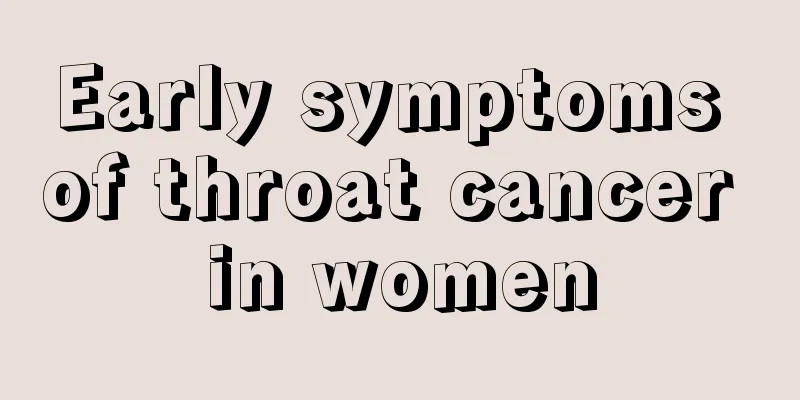What are the causes of bile duct cancer

|
Cholangiocarcinoma is a digestive system disease that directly affects bile secretion and causes great harm to the patient's body. Although the disease is very frightening, it cannot be reversed. All you can do is cooperate with the doctor's treatment and pay attention to care and dietary hygiene in life. So, what are the causes of cholangiocarcinoma? Let's take a look. The causes of bile duct cancer are related to the following factors: 1. Chronic inflammation and infection of the bile duct: Long-term chronic inflammation is the basis for the occurrence of bile duct cancer, because clinically found that diseases related to bile duct cancer can lead to chronic inflammation of the bile duct. Certain substances in the bile (such as metabolites of bile acid) stimulate the bile duct mucosa for a long time, leading to atypical epithelial hyperplasia. 2. Bile duct and gallbladder stones: 20% to 57% of bile duct cancer patients have gallstones, so it is believed that chronic stimulation by stones may be a carcinogenic factor. 3. Ulcerative colitis: It has been reported that the incidence of bile duct cancer in patients with ulcerative colitis is 10 times higher than that in the general population. The age of onset of bile duct cancer patients with ulcerative colitis is 20 to 30 years earlier than that of the general population, with an average age of 40 to 45 years. They often have a long history of colitis. Chronic bacteremia in the portal vein system of patients may be the cause of bile duct cancer and PSC. The lesions often affect the entire colon. Ulcerative colitis-induced bile duct cancer may be related to chronic portal vein bacteremia. 4. Cystic malformation of the bile duct (congenital bile duct dilatation): It has become a consensus that congenital bile duct cysts are prone to cancer. The incidence of bile duct cancer in patients with congenital bile duct cysts is as high as 2.5% to 28%. Patients with bile duct cysts develop cancer 20 to 30 years earlier than normal people. Although 75% of bile duct cysts show symptoms in infancy and childhood, as for the occurrence of bile duct cancer, 3/4 of patients have symptoms of bile duct cysts in adulthood. Regarding the mechanism of bile duct cysts leading to bile duct cancer, some people believe that when the opening of the pancreatic duct into the bile duct is abnormally high, pancreatic fluid will flow back into the bile duct and cause malignant changes in the bile duct epithelium. Other factors that may lead to malignant changes include bile stasis, stone formation, and chronic inflammation in the cyst cavity. 5. Liver fluke (Clorchis sinensis) infection: Clonorchis sinensis infection is also believed to be related to the occurrence of cholangiocarcinoma. Although Clonorchis sinensis mostly parasitizes in the intrahepatic bile duct, it can also parasitize in the extrahepatic bile duct. The worm itself and its metabolic products cause long-term stimulation to the bile duct mucosal epithelium, causing hyperplasia of the bile duct mucosa, tumor-like changes, and cancer. 6. History of biliary surgery: Cholangiocarcinoma may occur many years after surgery and may occur in bile ducts that do not contain stones. It is mainly caused by chronic biliary infection leading to epithelial anaplasia, often after biliary drainage surgery. 7. Radioactive thorium dioxide: Among patients with a history of contact with thorium, the onset age of cholangiocarcinoma is 10 years earlier than those with no history of thorium contact. The average incubation period is 35 years (after exposure to thorium), and it mostly occurs at the distal end of the intrahepatic bile duct tree. 8. Malignant transformation of sclerosing cholangitis: Patients with primary sclerosing cholangitis (PSC) have a higher chance of developing bile duct cancer than the general population. PSC is also related to ulcerative colitis. 9. Hepatitis B virus infection: Some domestic bile duct cancer patients are also infected with hepatitis B virus. Whether there is a connection between the two remains to be further clarified. 10. K-ras gene mutation: Molecular biological studies in recent years have shown that the mutation rate of codon 12 of the K-ras gene in cholangiocarcinoma is as high as 77.4%, indicating that the K-ras gene mutation may play a relatively important role in the occurrence of cholangiocarcinoma. In addition, it may be related to pancreatic juice reflux, bile stasis, stone formation, malignant transformation of benign bile duct tumors, and tumor-like differentiation of liver stem cells, all of which can cause chronic inflammatory stimulation of the bile duct mucosa and induce bile duct cancer. |
<<: What factors are related to the occurrence of bile duct cancer
>>: Can osteosarcoma be cured abroad?
Recommend
Is washing your hair with beer harmful to the human body?
Beer is a very common drink in our lives, but man...
Treatment methods and precautions for sweat herpes
Dyshidrosis is a common skin disease that occurs ...
How to prevent problems caused by prolonged sitting at the computer
The emergence of computers has completely changed...
What are the exercises for the early stages of esophageal cancer
Cancer is preventable, but in addition to develop...
Can patients with early kidney cancer live 50 years?
Can patients with early-stage kidney cancer live ...
Can I breastfeed during the confinement period when I have urticaria
The main reason why female friends develop urtica...
Benefits of long-grain fragrant rice
Rice is a staple food that people cannot live wit...
Digitalis poisoning
In clinical medicine, medication is an indispensa...
What should I do if my arm hurts from the wind
In addition to eating watermelon in the summer, w...
What can be used instead of five-spice powder
Five-spice powder is a very common condiment on t...
How to remove blackheads on the nose
The nose is the place where blackheads are most l...
Convulsions after general anesthesia surgery
General anesthesia can only be used for surgery w...
How long is the life expectancy of early nasopharyngeal cancer? How to check?
Some people worry that once they have cancer, the...
What are the functions and effects of ivory
Speaking of ivory, the first thing that comes to ...
Early symptoms of prostate cancer
Early symptoms of prostate cancer usually include...









